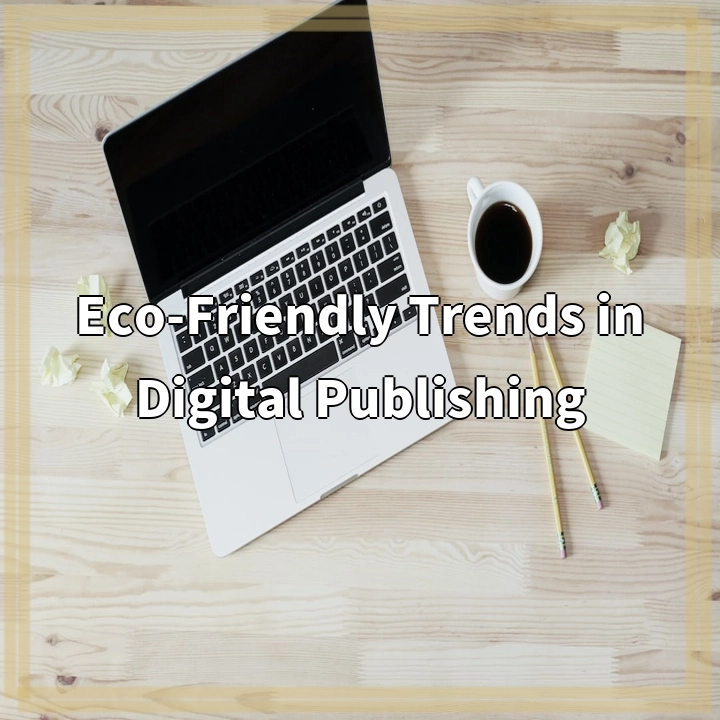
What is Eco-Friendly Trends in Digital Publishing?
Eco-Friendly Trends in Digital Publishing refer to the efforts made by the publishing industry to reduce its environmental impact through sustainable practices and the use of digital technologies. As traditional publishing relies heavily on paper, ink, and physical distribution, digital publishing offers a greener alternative that minimizes the consumption of natural resources and reduces waste.
Real-World Problems Associated with Eco-Friendly Trends in Digital Publishing
While digital publishing presents a more sustainable option compared to traditional print, it is not without its challenges. These real-world problems include:
1. Energy Consumption and Carbon Footprint
Digital publishing requires the use of electronic devices such as computers, servers, and data centers, all of which consume energy and contribute to carbon emissions. The increasing demand for online content results in higher energy consumption, especially in areas where energy sources may not be renewable or low-carbon. It is crucial for the industry to invest in energy-efficient technologies and renewable energy sources to mitigate these environmental impacts.
2. E-Waste and Disposal
The rapid advancement of digital technologies leads to the constant upgrading of devices, resulting in a significant amount of electronic waste (e-waste). E-waste contains hazardous materials like mercury, lead, and cadmium, which can pose serious risks to the environment and human health if not properly disposed of. Digital publishers need to prioritize responsible e-waste management, including recycling and proper disposal methods, to minimize their environmental footprint.
3. Internet Infrastructure and Data Centers
Digital publishing relies on internet infrastructure and data centers, which consume vast amounts of energy for operation and cooling. The energy usage of these facilities is often overlooked, but it is critical to ensure that they are powered by renewable energy sources and implement efficient cooling systems. As data usage continues to grow, the industry should invest in sustainable data center practices to minimize their environmental impact.
4. Digital Divide and Access
While digital publishing offers a more sustainable option, it also raises concerns regarding access and the digital divide. Not all areas have reliable internet access or the necessary devices to consume digital content. Publishers need to address this issue by ensuring inclusiveness and acknowledging the environmental benefits of print for communities with limited access to digital technologies.
5. Digital Preservation and Longevity
In the digital publishing landscape, there is a constant challenge of preserving content and ensuring its longevity. Digital files can become obsolete due to software or hardware changes, leading to potential data loss and the need for repeated migration and storage. Publishers must consider strategies for long-term preservation of digital content to avoid unnecessary waste and ensure accessibility in the future.

Solutions for Eco-Friendly Trends in Digital Publishing
To address the real-world problems associated with eco-friendly trends in digital publishing, the industry can implement the following solutions:
1. Energy Efficiency and Renewable Energy
Digital publishers can prioritize energy-efficient technologies and invest in renewable energy sources to reduce their carbon footprint. This includes using energy-saving devices, optimizing server and data center efficiency, and utilizing renewable energy for powering digital infrastructure.
2. Responsible E-Waste Management
Publishers should promote responsible e-waste management by partnering with certified recycling facilities, implementing take-back programs, and encouraging consumers to recycle their old devices. Proper disposal and recycling of e-waste will minimize environmental impact and ensure the safe handling of hazardous materials.
3. Sustainable Data Center Practices
Data centers should strive to minimize energy consumption through efficient cooling systems, virtualization techniques, and optimized server utilization. Adopting renewable energy sources, such as solar or wind power, for data center operations can significantly reduce the carbon footprint of digital publishing.
4. Bridging the Digital Divide
To address access issues, publishers can explore partnerships with organizations working on bridging the digital divide. This includes providing support for building internet infrastructure in underserved areas and ensuring affordable access to digital technologies. Additionally, acknowledging the benefits of print materials for communities with limited digital access is essential for inclusivity.
5. Long-Term Content Preservation
Publishers need to develop strategies for the long-term preservation of digital content. This includes migrating content to standardized formats and adopting open and well-supported file formats to minimize the risk of obsolescence. Implementing robust backup and recovery systems is also crucial for protecting digital content and ensuring its accessibility in the future.















